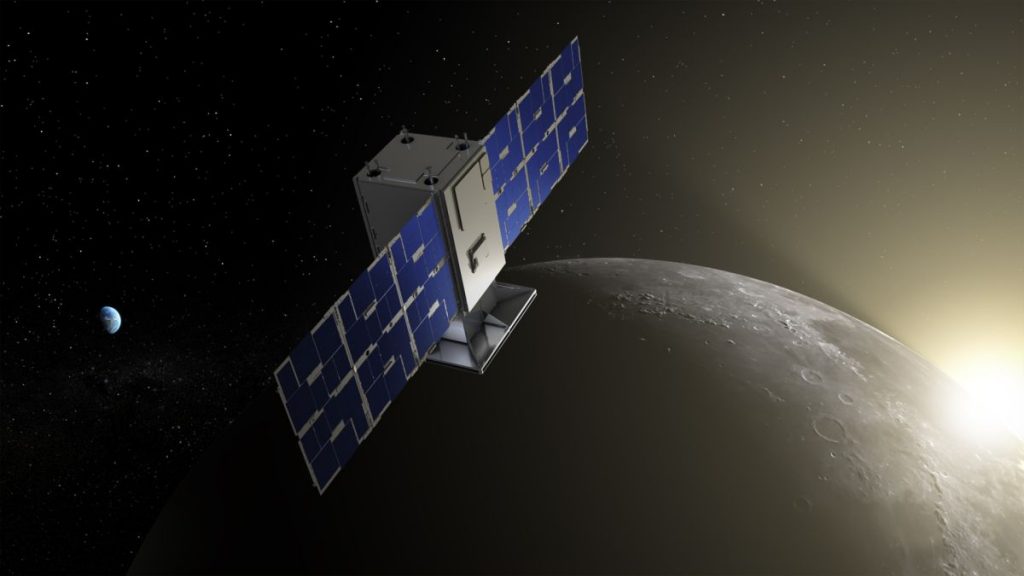
NASA’s tiny CAPSTONE moon probe is nearly 1 million miles from Earth (Image Credit: Space.com)
NASA’s little CAPSTONE spacecraft keeps checking off milestones on its long journey to the moon.
The 55-pound (25 kilograms) CAPSTONE reached apogee, its farthest point from Earth, on Friday afternoon (Aug. 26). And was indeed far away on that date — a whopping 951,908 miles (1,531,948 kilometers), according to Advanced Space (opens in new tab), the Colorado-based company that operates the mission for NASA.
CAPSTONE (short for “Cislunar Autonomous Positioning System Technology Operations and Navigation Experiment”) launched atop a Rocket Lab Electron booster on June 28. The microwave-oven-sized probe is taking a circuitous, highly fuel-efficient route to the moon, where it’s expected to arrive on Nov. 13.
Related: Why it’ll take NASA’s tiny CAPSTONE probe so long to reach the moon
On that date, CAPSTONE will slide into a near rectilinear halo orbit (NRHO) around Earth’s nearest neighbor — the same highly elliptical path that will be used by Gateway, the planned space station that’s an integral part of NASA’s Artemis moon program.
No spacecraft has ever occupied a lunar NRHO before, so CAPSTONE will vet its stability and other characteristics ahead of Gateway’s assembly there. The cubesat will also conduct several navigation and communications tests during its planned six months at the moon, some of them in concert with NASA’s Lunar Reconnaissance Orbiter.
CAPSTONE has already proven itself a resilient spacecraft. The cubesat went dark shortly after it deployed from Rocket Lab’s Photon bus on July 4, but mission team members managed to reestablish contact a day later. The brief dropout was caused by an improperly formatted command, CAPSTONE team members have said.
CAPSTONE isn’t the only Artemis action that space fans have been following lately. NASA aimed to launch Artemis 1, the first official mission of the ambitious program, on Monday morning (Aug. 29) but called the attempt off due to a technical issue.
Artemis 1 will use NASA’s brand-new Space Launch System (SLS) megarocket to launch an uncrewed Orion capsule on a six-week journey to lunar orbit and back. The glitch that nixed Monday’s planned liftoff was a cooling problem with one of the four RS-25 engines in the SLS’ core stage.
The Artemis 1 team is still investigating the issue and has not yet announced a new target launch date.
Mike Wall is the author of “Out There (opens in new tab)” (Grand Central Publishing, 2018; illustrated by Karl Tate), a book about the search for alien life. Follow him on Twitter @michaeldwall (opens in new tab). Follow us on Twitter @Spacedotcom (opens in new tab) or on Facebook (opens in new tab).





